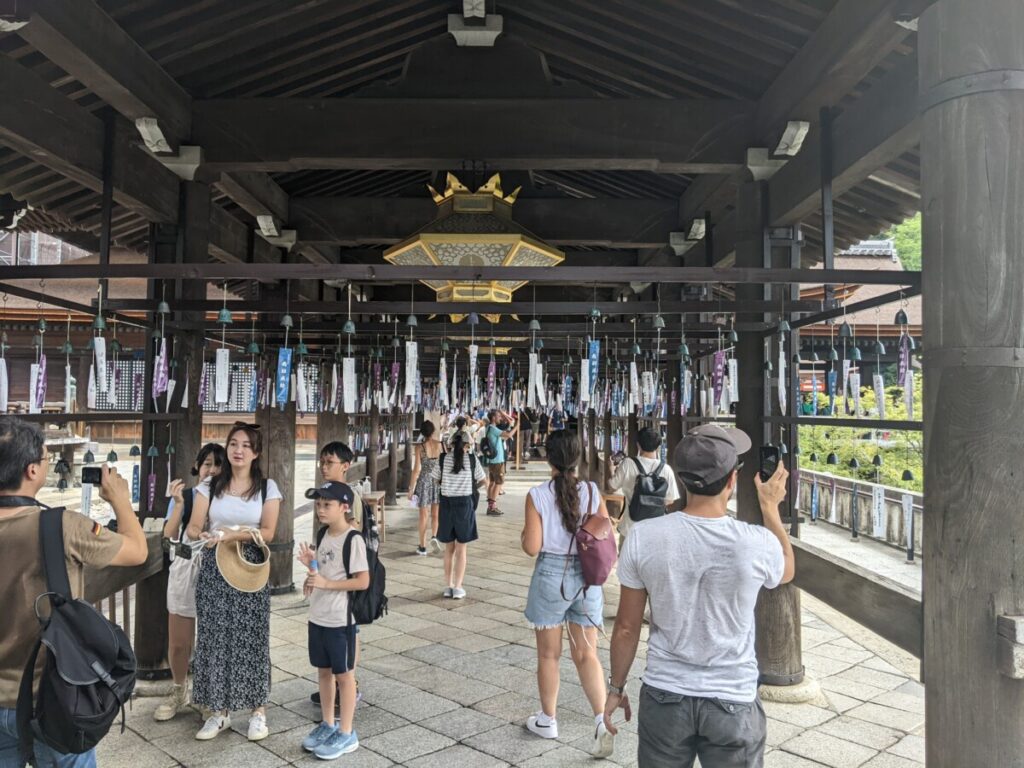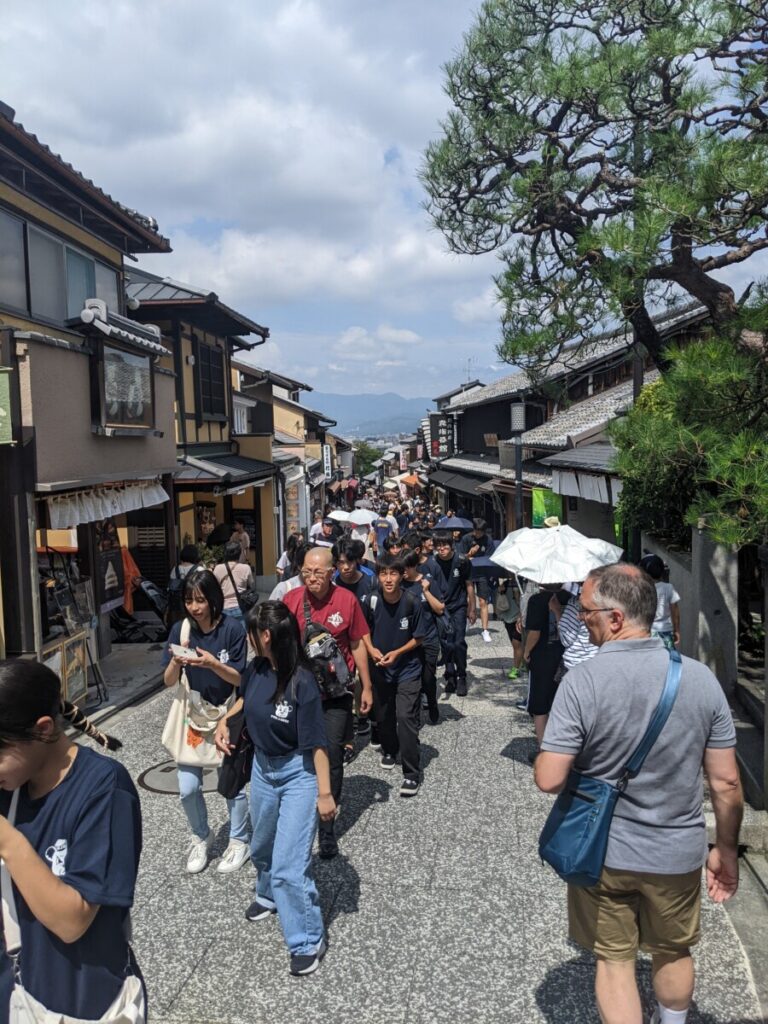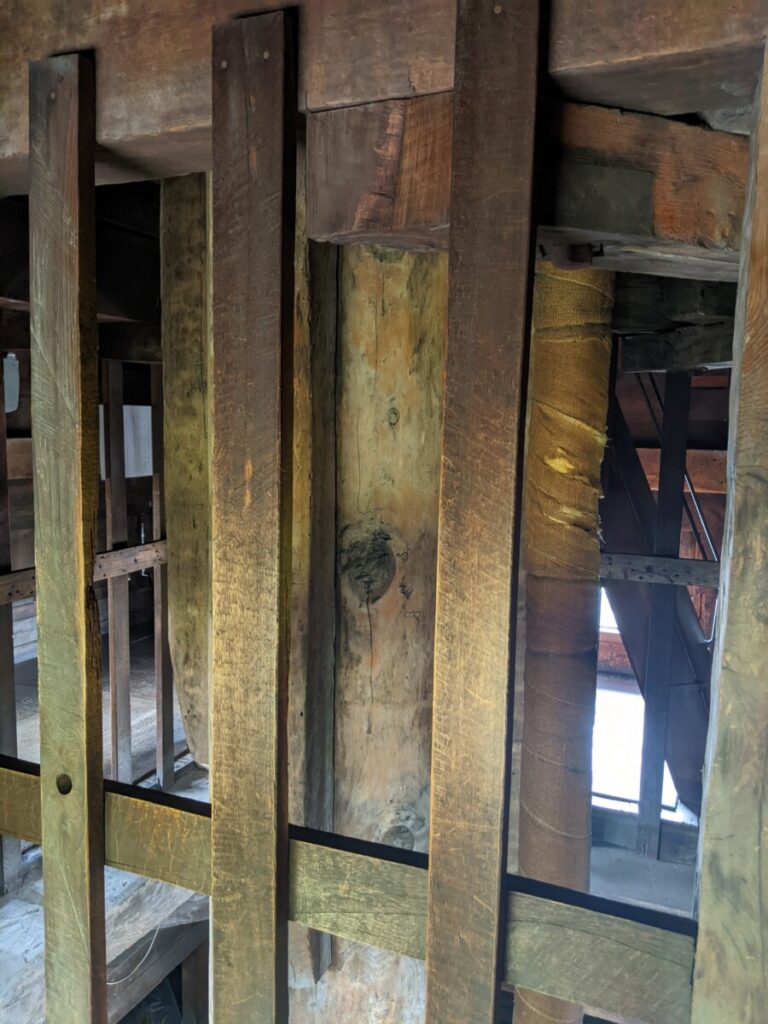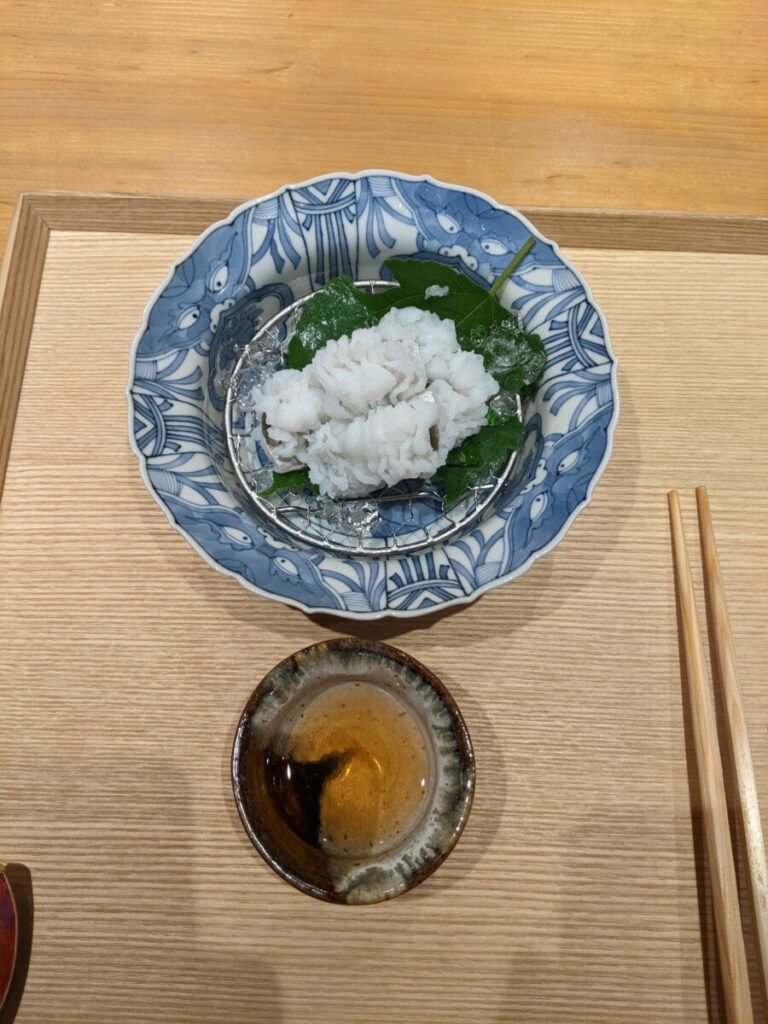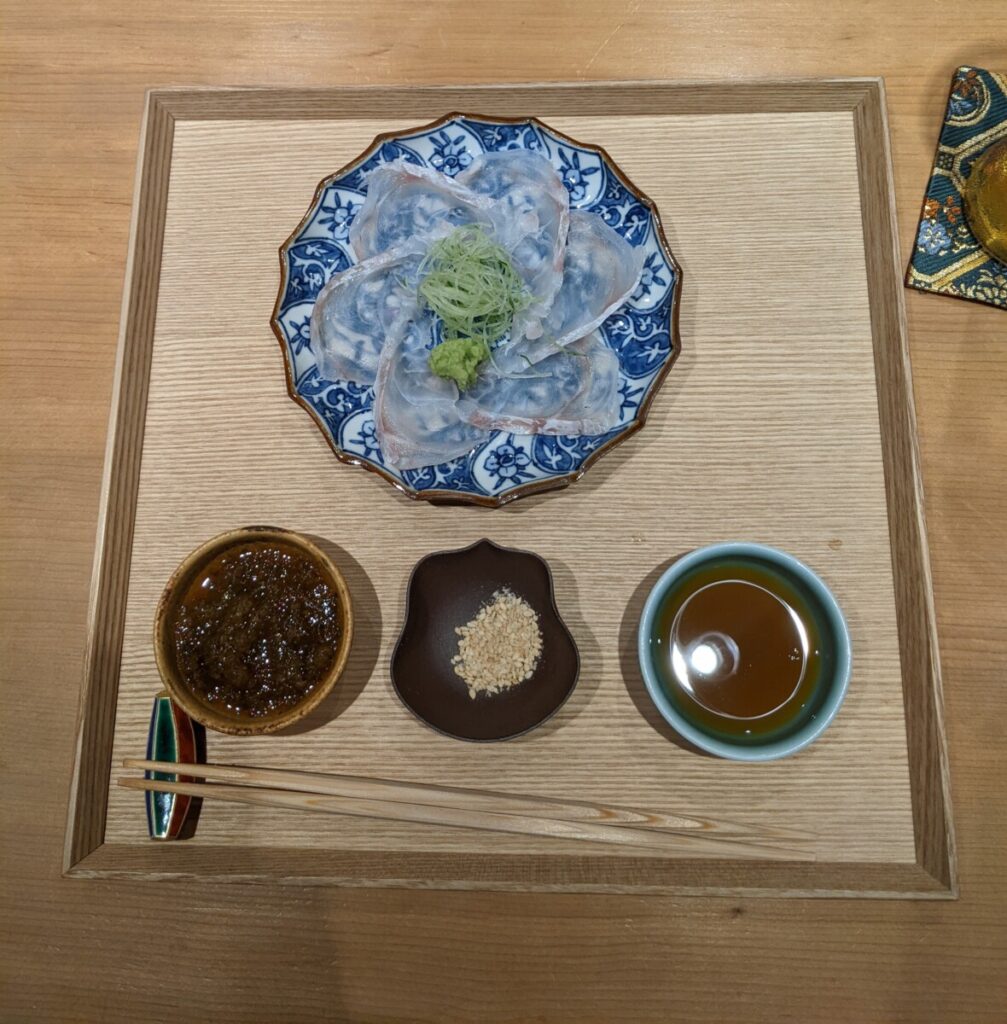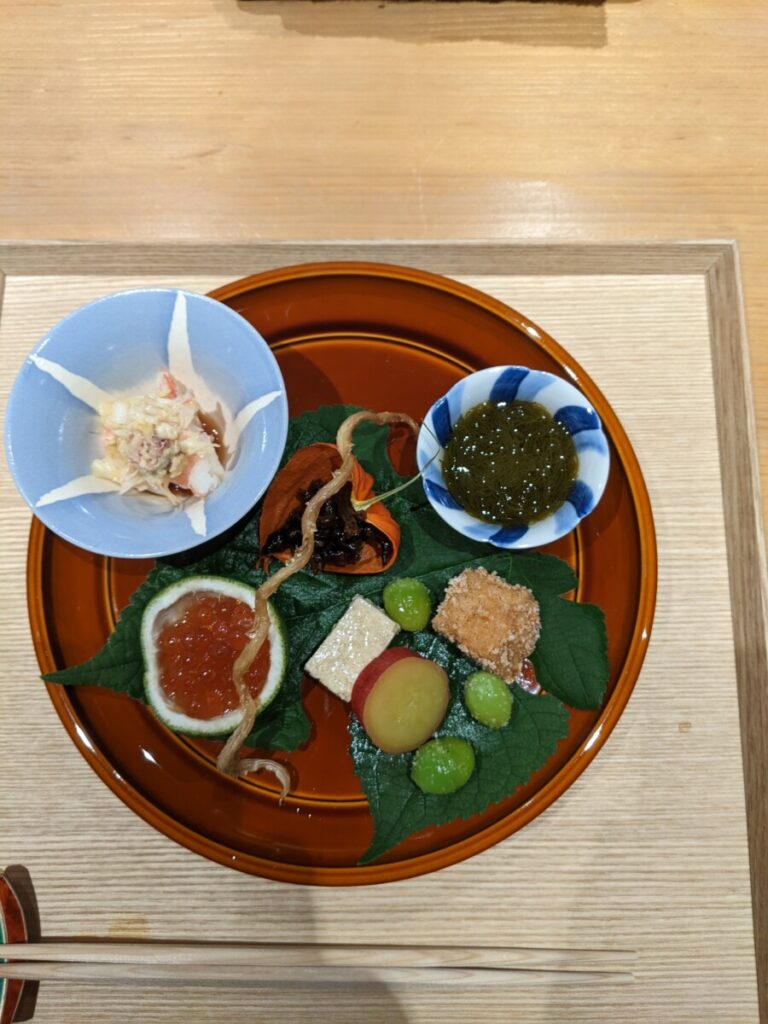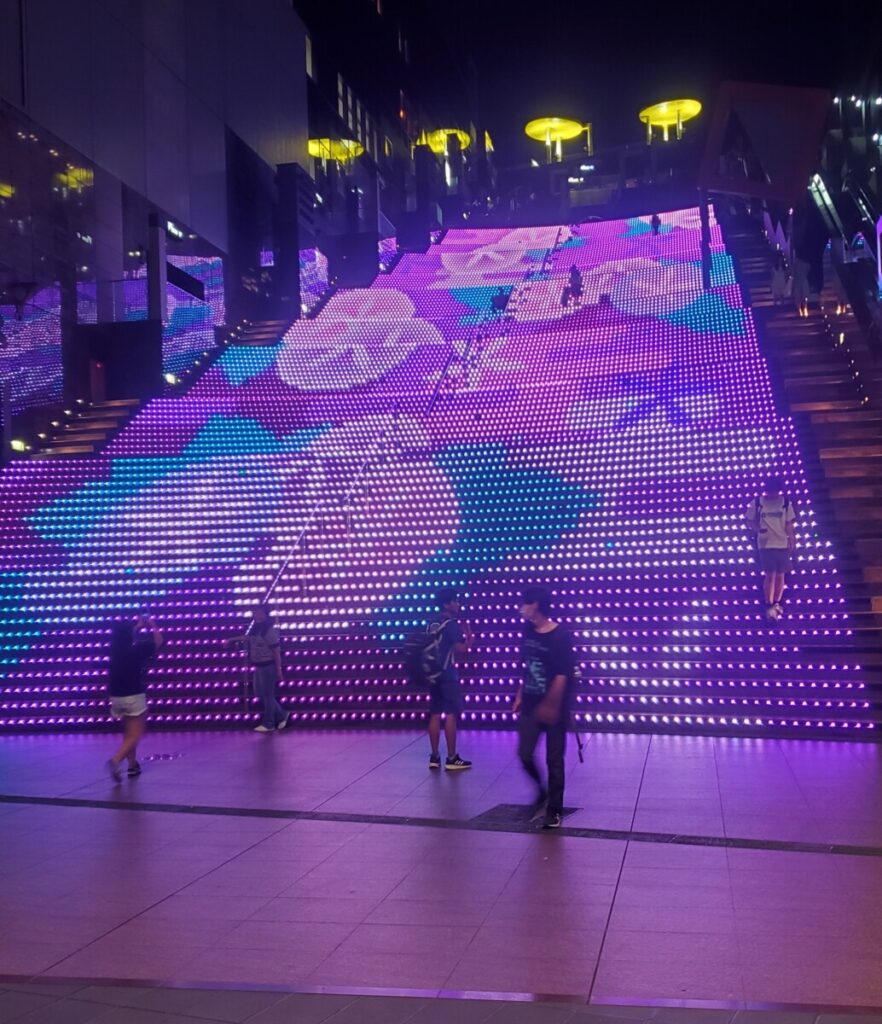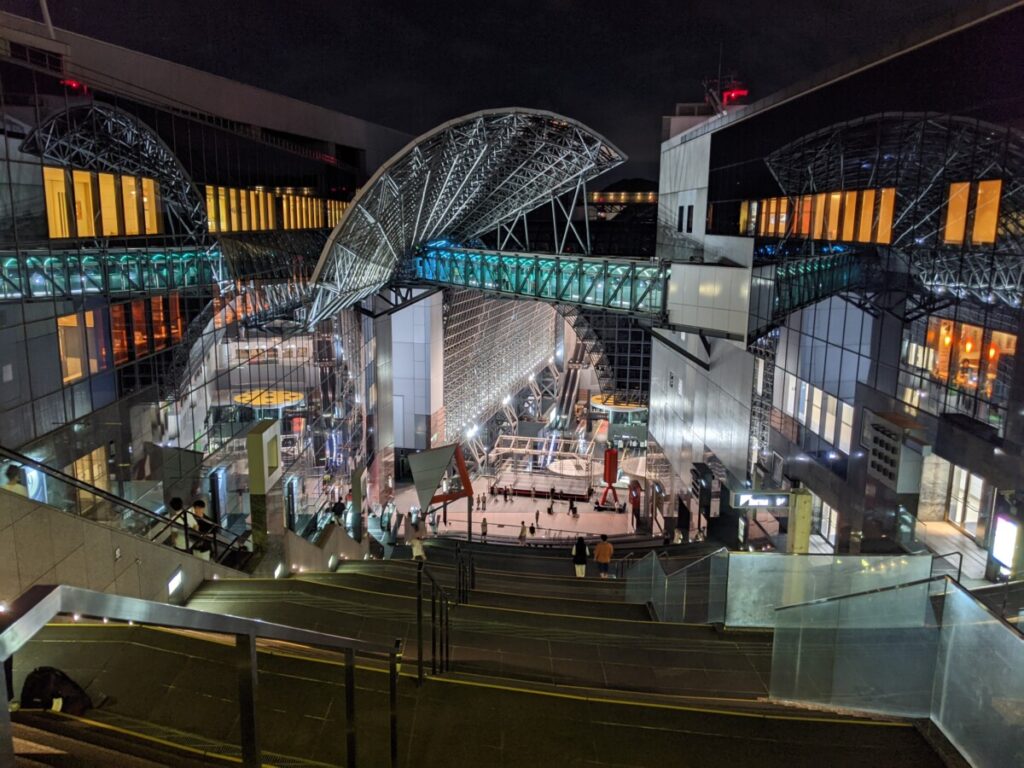This morning we set out to explore the Higashiyama (eastern hills) area of Kyoto, which is known for picturesque streets, lovely views of the city, and a truly enormous number of shrines and temples. 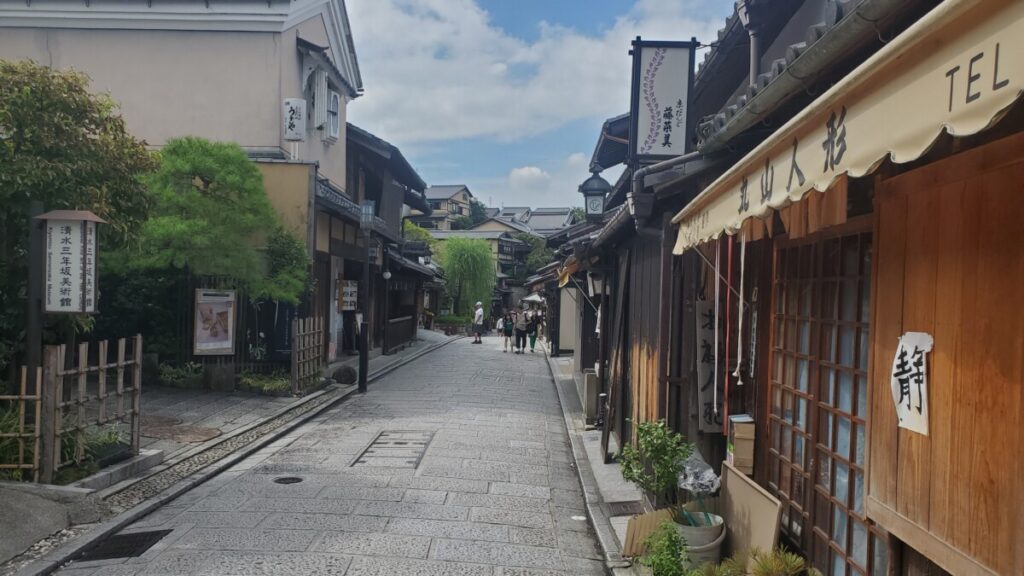
In particular, our first stop was the temple complex, Kiyomizu-dera, situated on a hillside overlooking the neighborhood, and by extension, all of the city.
We took a bus out to the area and, after a quick breakfast, started our walk to the temple. Just a few minutes after we started out, we turned a corner and ran into the friends with whom we would be having dinner later. This was completely unplanned and unexpected – Kyoto’s not as big as Osaka or Tokyo, but still a bit larger than one expects to have this sort of thing happen.
Our friends had already been up to the temple, so we parted ways and resumed our climb. They had the right idea to go early in the morning, as it was once again extremely hot, and also quite crowded.
But the views were, as promised, amazing. The porch at right in this picture is justifiably famous.

And from it, you can see a famous spring with three streams. Each is thought to confer a different benefit, but it’s considered greedy to drink from all three.
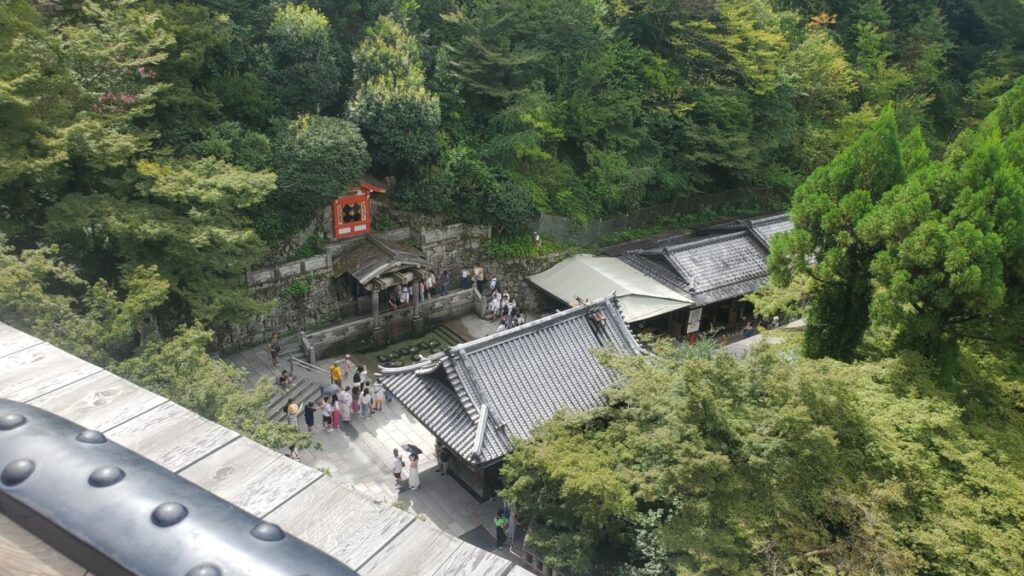
This pagoda is said to help provide an easy childbirth.
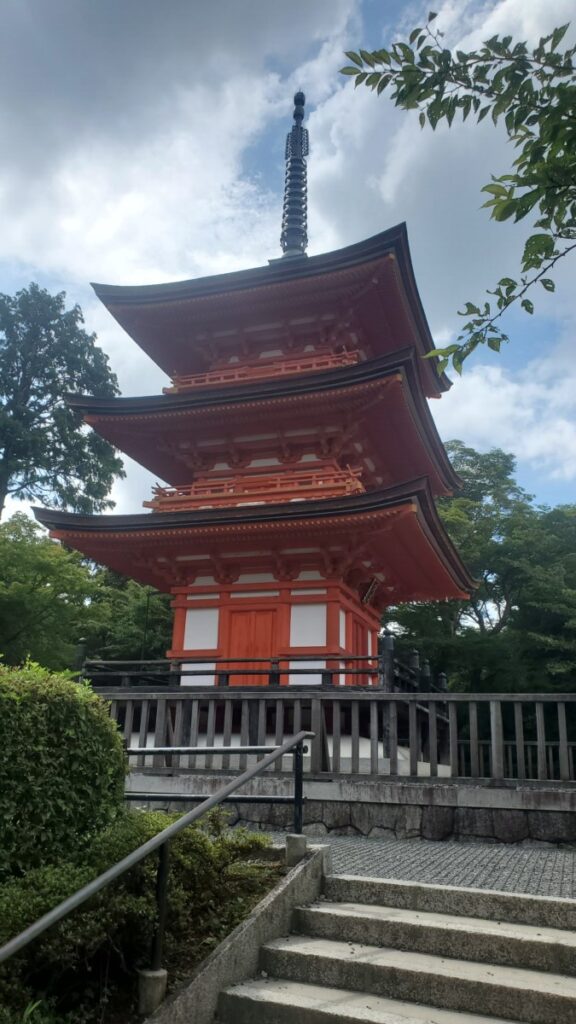
And here’s a view of that porch from below.
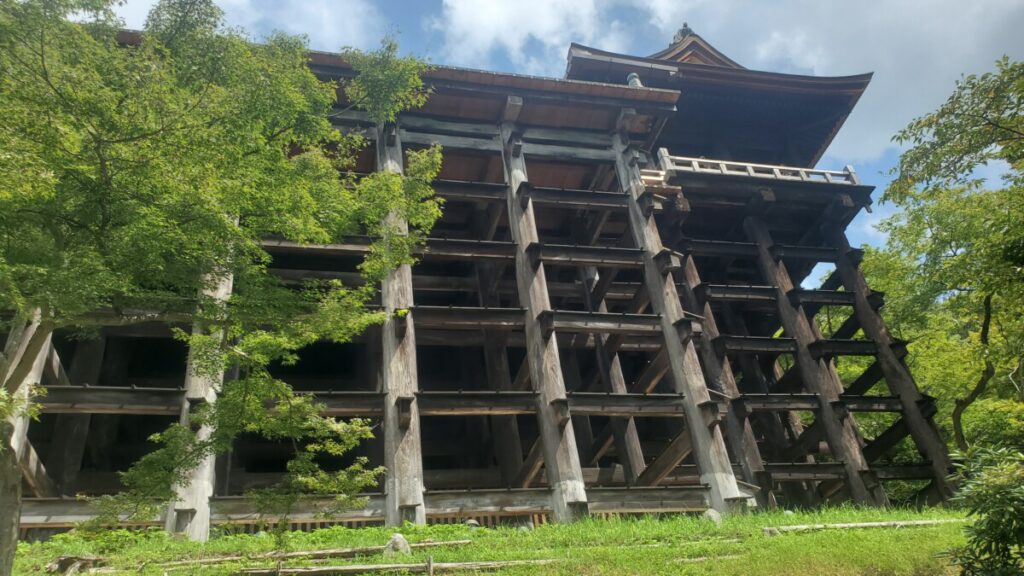
By this point we were getting severely overheated again, so we stopped for a shaved ice, still on the temple grounds. Once again, that interesting mixture of spirituality and commerce. On leaving the temple, the crowds were starting to get pretty fierce on the main street leading up the hill.
But interestingly, when we went just a few streets over to take our own photo of an EXTREMELY famous view of the area, there were many fewer people around. (Not NONE, of course – just fewer.)
The pagoda in the photo, Hōkan-ji Temple, is unusual in that it’s one of the few that you can not only enter, but actually climb to the second floor. The pagoda was first built in the 6th century, but the present structure dates from 1440. The inside is dark and cramped, but it’s still striking to see the structure from within.
But not for too long when it’s in the 90s,because my goodness wood retains heat well.
After that, we headed back to downtown Kyoto to look for lunch. We tried the food hall of a well known department store first. Japanese department stores usually have a floor or two dedicated entirely to food. This tends to fall into three categories. There will be a number of counters dedicated to gift food: nicely wrapped boxes of tea, fancy cakes, or hand-selected fruit costing upwards of 50 dollars per apple. The second category is groceries – meats, vegetables, and the like that you’d take home if you were planning on actually making dinner. And the third category is ready-to-eat meals – bento boxes, noodles, sushi, anything you can think of, really.
The catch is that there’s nowhere to eat it. All this amazing looking food generally cannot be consumed in the store, and many of the stores don’t have designated areas nearby to eat it, either. It’s aimed at either workers who can take it back to their office, or for people who can take it home with them. Since we were neither, we wandered back out to a nearby shopping street and had another graze. Fish on a stick, chicken on a stick, and this:
What’s not to like?
We spent the rest of afternoon wandering about downtown. We visited a large stationary store (like most of them) that also happened to be a stationery store.
Having seen various stores selling buns shaped like a 10 yen coin, we decided to try one. I’m not sure WHAT possessed me to think a steaming hot bun would be a good idea in this weather, but it was tasty. We assumed this was some sort of traditional street food, since we had seen it everywhere, but it turns out it’s a trendy influencer thing that’s only been around for a few years. We’re trendy! Now if only we’d taken a PICTURE of the damn thing, we could have posted it to our Insta. Or our gram. Or our stagr, or whatever the kids are calling it these days.
We sat down on a bench to eat it in another covered shopping street, only to realize that we were sitting across from yet another temple, this one built into the mall itself.
That red logo is a traditional Buddhist symbol that dates back millennia, and is a mirror image of the one you’re probably thinking of. Just a few doors down in the same street was a path leading to yet a DIFFERENT temple, this one famous because it’s where the first of the “Three Great Generals”, Odo Nobunaga, was murdered.
After that, we’d had enough of the heat and walking, so we went back to our hotel to rest a bit before dinner. And dinner was going to be a doozy. One of our friends who we had run into earlier was taking us for Kaisekei – a traditional Kyoto multicourse meal – at a restaurant with a Michelin star. I had spent a lot of time trying to figure out how to dress appropriately given packing constraints and the heat, only to discover that the other party at the restaurant was wearing shorts and a backwards ball cap. Sigh.
And I do mean the ONE other party – the restaurant is a single counter with eight seats. There were five in our party and two in the other, and that’s the entire room. The chef prepared each course in front of us and placed in on the table. Fortunately, our friend and guide is a native Japanese speaker, so he was able to translate our questions and the chef’s comments.
We didn’t remember to take pictures of all the courses, sadly. First up was a dish of abalone and pickled vegetables. Next, hamo fish. This is a fish with an absurd number of bones, that is only made palatable by an incredibly sophisticated knife technique that makes dozens of cuts to render the bones imperceptible. It takes many years for a chef to be properly trained in this technique.
Next, sashimi.
Not pictured, grouper in dashi broth. And it’s a shame there’s no picture, because of all these exquisite dishes, this is the one that was probably our favorite. We were just too blown away by the flavor to remember to pull out our phones.
Next up, an assortment of small items.
I don’t remember all of these, but there’s crab, cod roe, seaweed, edamame, tofu, and fried fish belly. Speaking of fish… several dishes earlier, we had watched the chef pull a number of live small fish out of a tank and thread them (still wiggling) on skewers. Each of these were placed on a charcoal grill, and for the last few courses, he had repeatedly returned to the grill to turn them. Now they were pulled off the grill and placed whole in front of us. And that’s how we were told to eat them – whole.
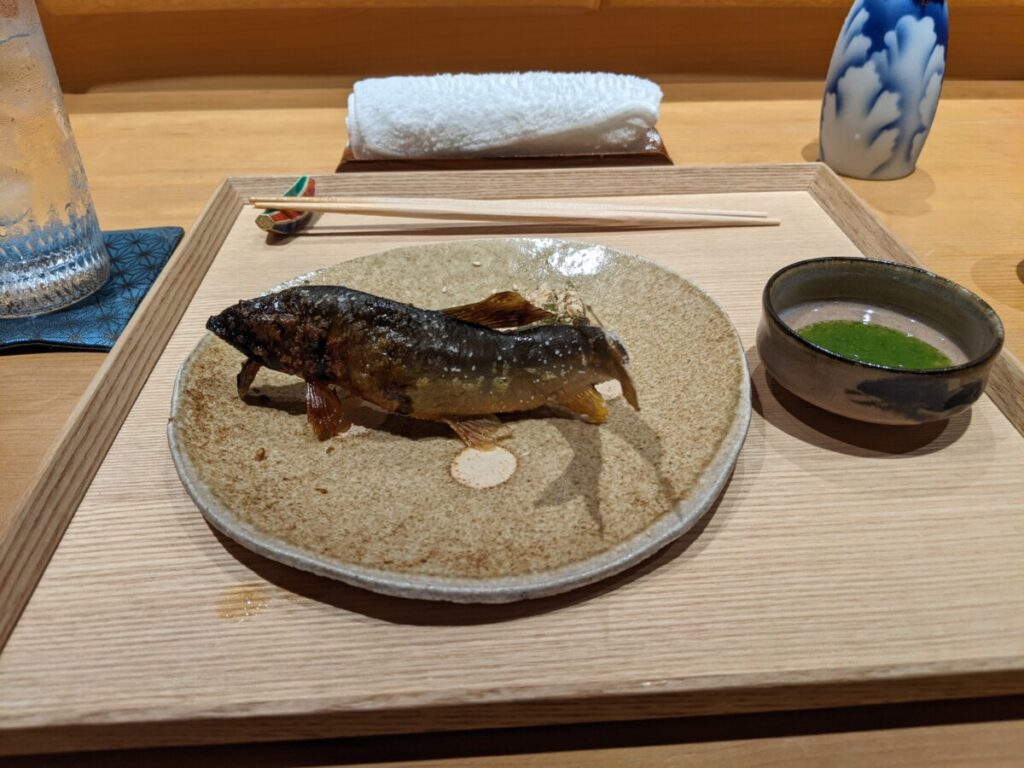
I thought it was amazing, but Leigh was a tad bothered.
One other thing to mention – all of the plates in these pictures were ALSO made by the chef.
Traditionally, the last main dish in a meal like this is the rice dish, so we were served eel over rice with more pickled vegetables. No picture of that, or dessert, which was honey ice cream with lemon juice, followed by carefully prepared matcha tea.
What a meal. Definitely one of the best we’ve ever had.
To finish the evening, we went and walked around the architectural marvel that is Kyoto Station for a bit. These stairs light up in various animations – it’s really cool.
And here’s the view down the same stairs from the top.
It was a long, but seriously amazing day.

